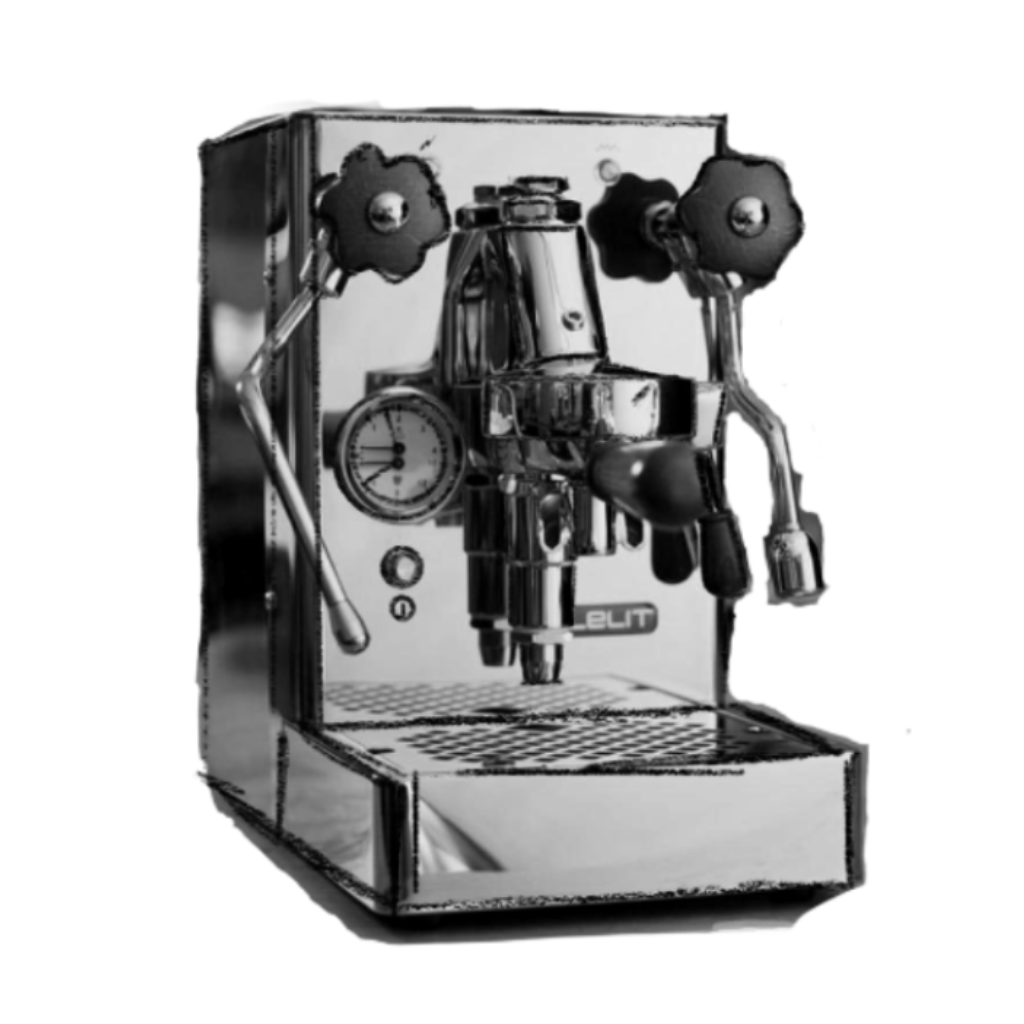Gaggia Classic Pro Evo Machine Spotlight (2024)

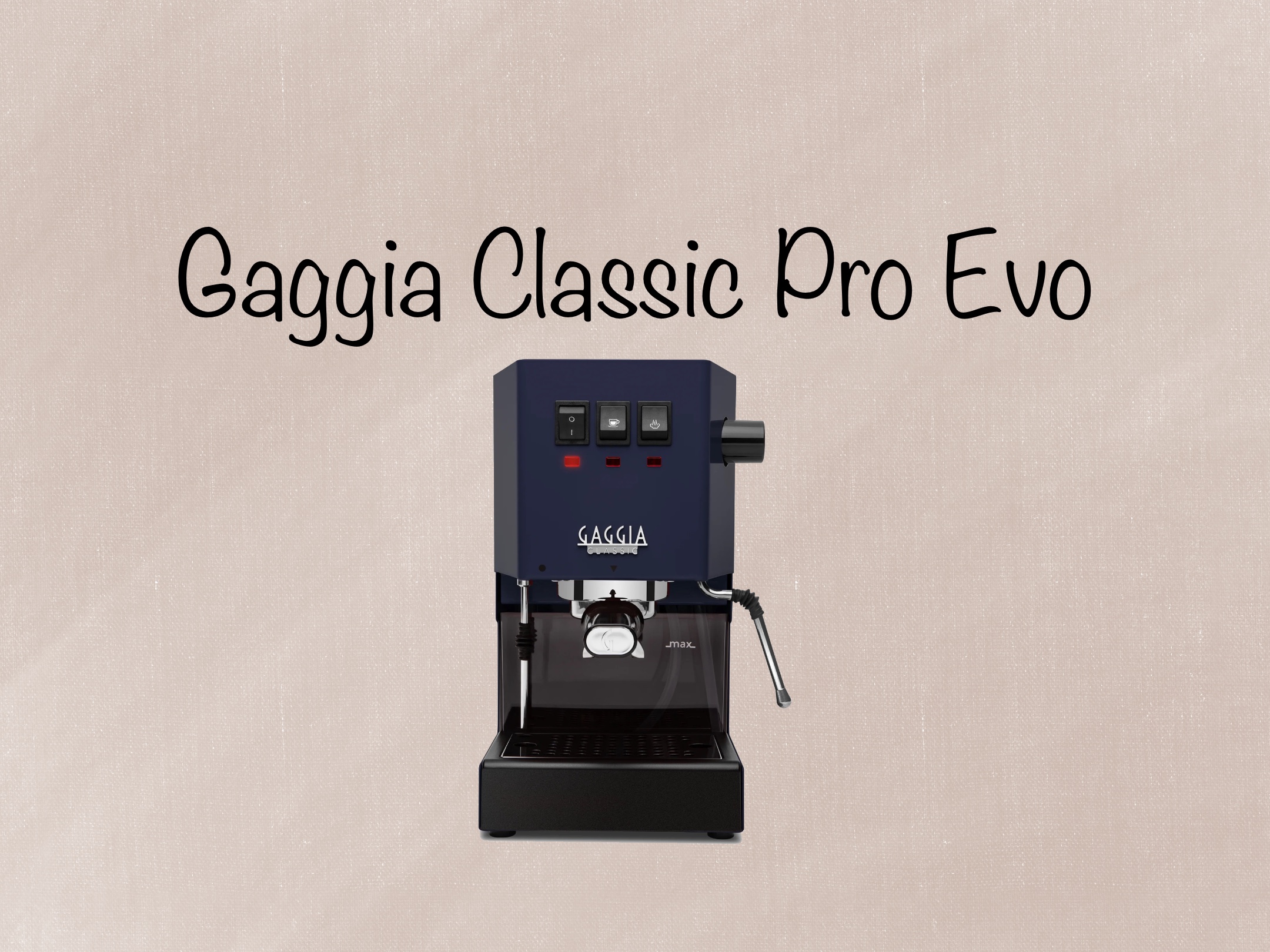
Introduction
In 2023, Italian-based Gaggia released the Classic Pro Evo, the next iteration of its famed Classic Pro. Since its original 1991 release, the Gaggic Classic line has risen to an almost cult-esque status, and for a good reason.
Providing a commercial-style single boiler for a very affordable price has made the Gaggia Classic Pro (GCP) a go-to for home baristas just breaking into the world of espresso. Although the GCP had much to offer, it also had its challenges and critiques, so in 2023, Gaggia released its next evolution of the Classic product line, with the Gaggia Classic Pro Evo.
In this release spotlight, we'll look at what improvements the GCP Evo has brought to the table, highlight its strengths and weaknesses, and compare the GCP Evo to the rising star, the Breville Bambino Plus.
Let's get brewing!
Table of Contents
New on the Gaggia Classic Pro Evo
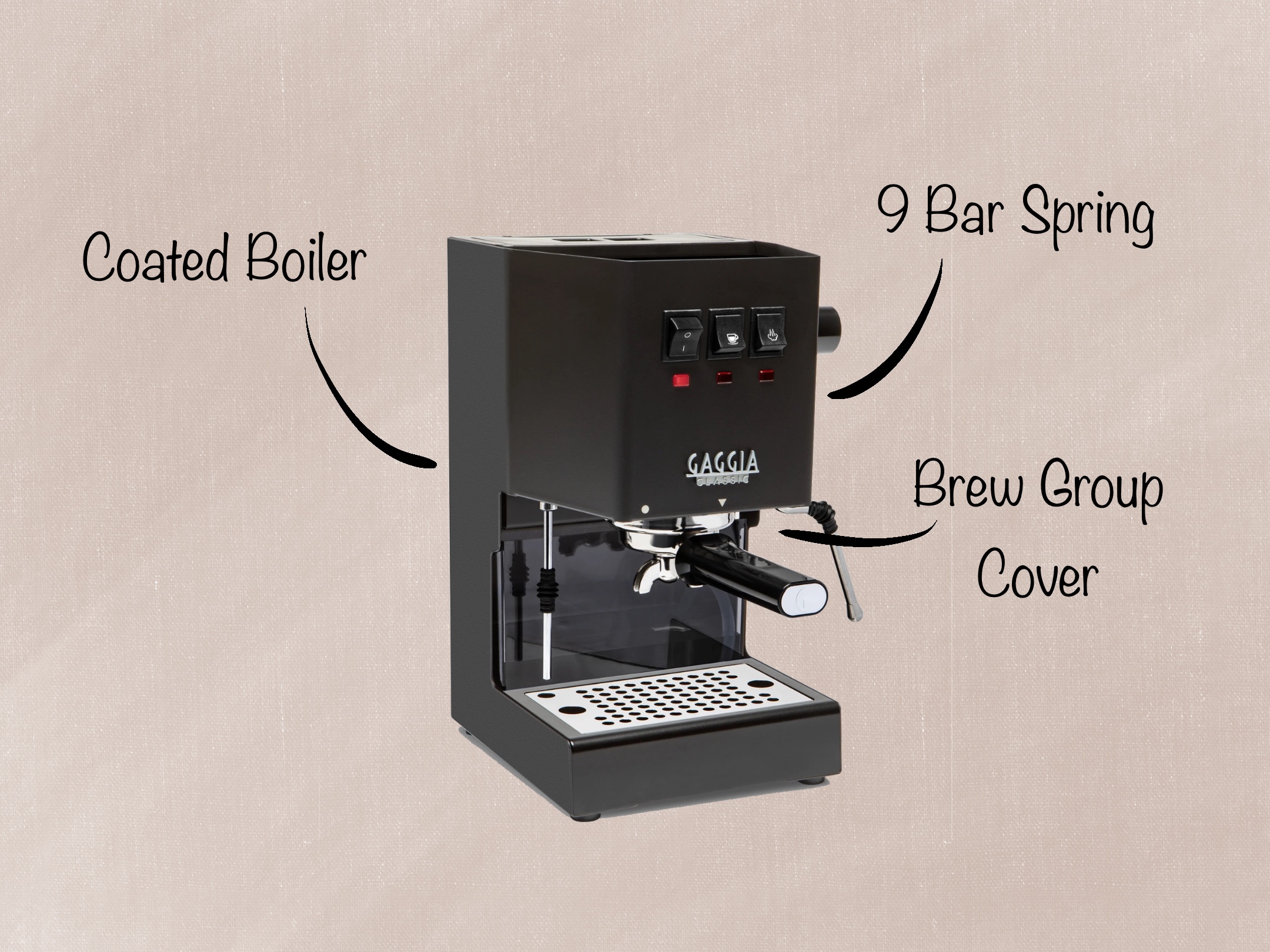
9 Bar Spring
Espresso is best brewed between 8 and 9 bar of pressure. While many espresso machines are built with a pump that can output up to 15 bars of pressure, they use regulators to expose the coffee to the correct 9 bars.
Prior to the release of the Gaggia Classic Pro Evo, the standard GCP shipped with a 15-bar spring that exposed the ground coffee to high pressure, leading to water channels and potentially poor extraction. The New GCP Evo ships with a 9-bar spring standard, reducing channeling and improving extraction.
Synthetic Boiler Coating
The original Gaggia Classic Pro was designed with an Aluminum single boiler that served both brew water and steam. All metal boilers, if exposed to compounds in sediment-rich water, will develop a build-up called 'scale' that can significantly impact taste and machine lifespan.
The Gaggia Classic Pro Evo now comes with a 'food-safe inert coating' that is designed to reduce scale build-up, improve flavor, and extend the life of the machine.
Brew Group Cover
Besides the two primary improvements, many of the changes are minor. The Gaggia Classic Pro Evo has tweaked the internal boiler and pump mounting plate to reduce noise and has added a polished steel group cover. Gaggia designed the Classic Pro Evo to be a true evolution of the Classic Pro and, as such, has made minor improvements to increase the quality, usability, and longevity.
Remains The Same
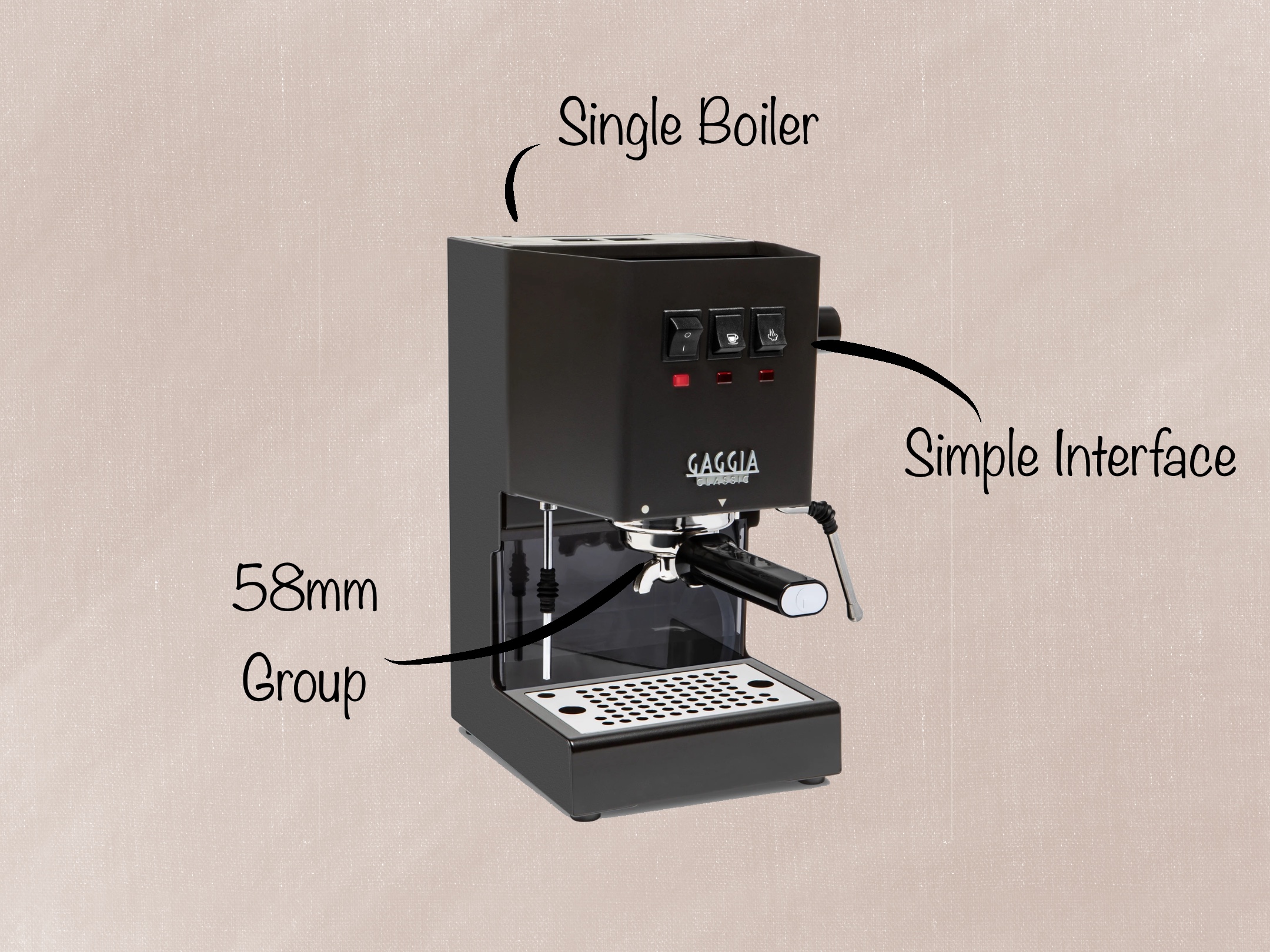
Single Boiler, Dual Use
The heart of the Gaggia Classic Pro Evo has remained the same. The GCP Evo continues to use a small yet mighty 0.1 L (3.5 oz) that provides hot water for brewing and steam for texturing milk. The GCP Evo heats the boiler and polished group in 5 - 10 minutes and is capable of transitioning between brew and steam in under a minute.
Commercial 58 mm Group
One of the most significant selling points of the Gaggia Classic line is the commercial-style 58mm portafilters. Most entry-level espresso machines use smaller, proprietary portafilters ranging between 51mm and 54mm in diameter.
The Gaggia Classic Pro Evo's decision to stick with the 58mm group means that owners of the GCP Evo can continue to use accessories and add ones similar to those used on more premium commercial machines.
Foolproof User Interface
A glance at the Gaggia Classic Pro Evo may look like nothing has changed at all. This is because Gaggia has decided to keep the interface as simple as possible.
Using 3 simple rocker switches, the GCP Evo only has options to power on, brew, and steam. All the controls are managed manually, with no added complexity or features prone to malfunctioning.
Missing on the Gaggia Classic Pro Evo
PID Regulation
As much as the 9-bar spring is a welcome change to the Gaggia Classic Pro Evo, it still lacks a PID-controlled boiler to regulate the internal temperature. This often means that espresso is brewed at varying temperatures, leading to entirely different extractions from shot to shot.
The most common workaround for this variability is called 'temperature surfing.' Temperature surfing is the process of activating the steam functionality to heat the boiler hotter than necessary, and then toggling off the steam and waiting 5-15 seconds for the water to cool to an optimal 90-90° C (195-205° F). Although temperature surfing is an effective solution, it would have been nice to see a PID-regulated boiler, even if the temperature itself was not controllable.
Quality Confidence
One of the biggest potential misses of the Gaggia Classic Pro Evo is the internal boiler coating. While the coating was designed to extend the lifespan of the boiler, a few initial reports across the internet (primarily Reddit) note the coating peeling off and causing flaking from the steam wand. As of January 2024, there has yet to be a confirmation or comment by Gaggia.
Comparison: Gaggia Classic Pro Evo vs. Breville Bambino Plus
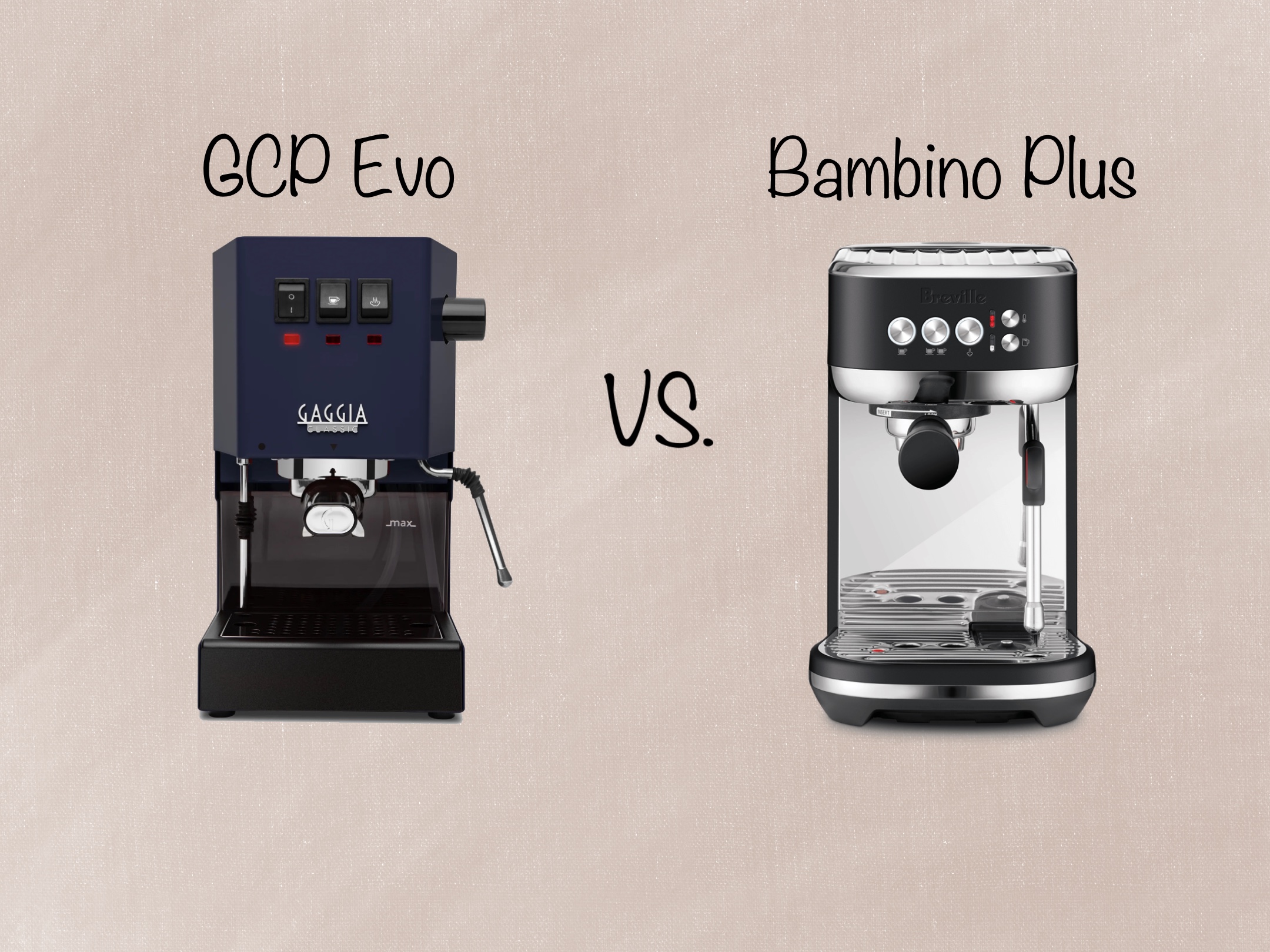
Heating & Warm Up Time
The Classic Pro Evo and Breville Bambino Plus are two unique takes on a beginner-oriented espresso machine. While the GCP Evo uses a classic single boiler, the Breville Bambino Plus has opted for a fast heating and compact thermoblock.
Single boilers often offer higher thermal stability from the heating element to the group head, helping extraction. Thermoblocks, while slightly less thermally stable, are ready to brew in seconds and can transition between brew and steam with minimal downtime.
User Interface
The Gaggia Classic Pro Evo and the Breville Bambino Plus also have separate approaches when it comes to the user interface. Although both machines have only 3-4 buttons, the functionality is rather unique.
While the Gaggia Classic Pro Evo uses simple on/off buttons, which requires manual start/stop, the Breville Bambino Plus uses volumetric dosing with optional manual control. Volumetric dosing allows the user to save 2 preset dose volumes to avoid manually starting and stopping the shot each time. In addition, the Bambino Plus uses a button to activate the milk frothing instead of a GCP Evo's rotary knob to open up the steam valve.
Features
The Gaggia Classic Pro Evo lacks a collection off features when stacked up against the Breville Bambino Plus. The Bambino Plus offers a PID-regulated thermoblock (no temperature surfing), volumetric shots, and hands-free milk frothing.
While the Breville Bambino Plus has a host of functionality features, fans of classic espresso will appreciate the 58mm group and solid steel construction on the Gaggia Classic Pro Evo, as compared to the smaller 54mm group of the Bambino Plus with more plastic components.
If you value a quality build, classic components, and the ability to tinker or modify, then the Gaggia Classic Pro Evo is a great pick. If you're looking for a more user-friendly machine that helps guide you to good espresso right out of the box, then we recommend looking at the Breville Bambino Plus.
Pricing and Availability
Price
As of the late 2023 release, the Gaggia Classic Pro Evo has slotted in to replace the Gaggia Classic Pro. Offered at the same $499 price (and often on sale for less), the GCP Evo is an offer that is hard to beat.
Availability
Gaggia has made strides to get its Classic Pro Evo into the hands of consumers quickly. The GCP Evo is available at large online retailers such as Amazon, as well as established espresso distributors like Whole Latte Love.
The Final Sip
The Gaggia Classic Pro Evo is a true evolution of Gaggia's 'Classic' product line. Although the GCP Evo does not make any significant changes to the design or internal workings, it has made a host of improvements to the overall build quality and extraction capabilities. Although chatter of boiler-coating quality assurance may cause some hesitation, the GCP Evo is still seen as a high-value espresso machine in the spring of 2024.
